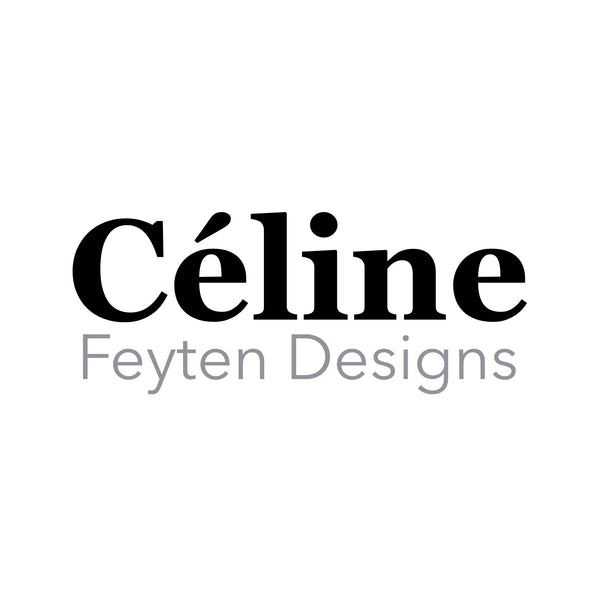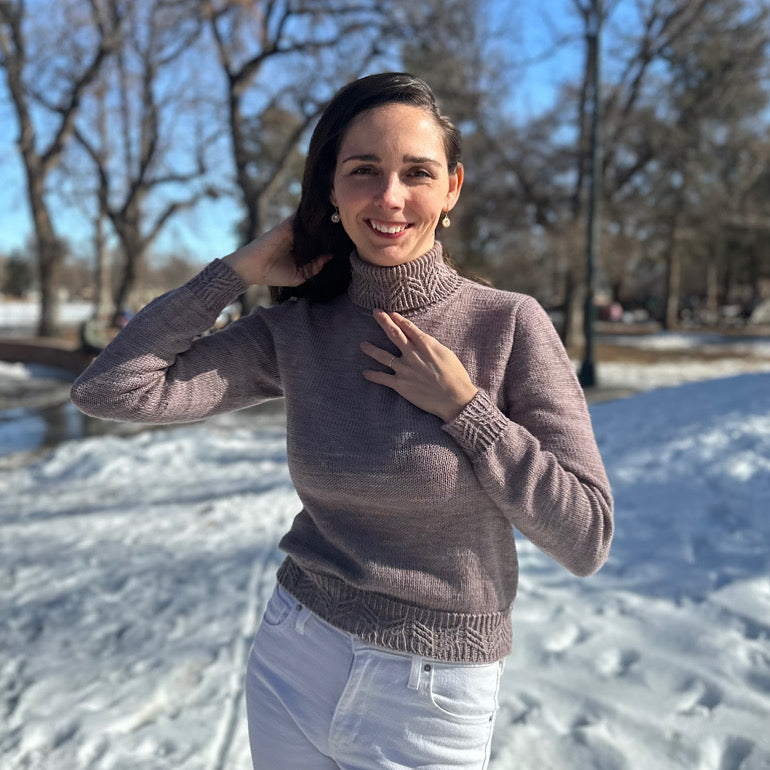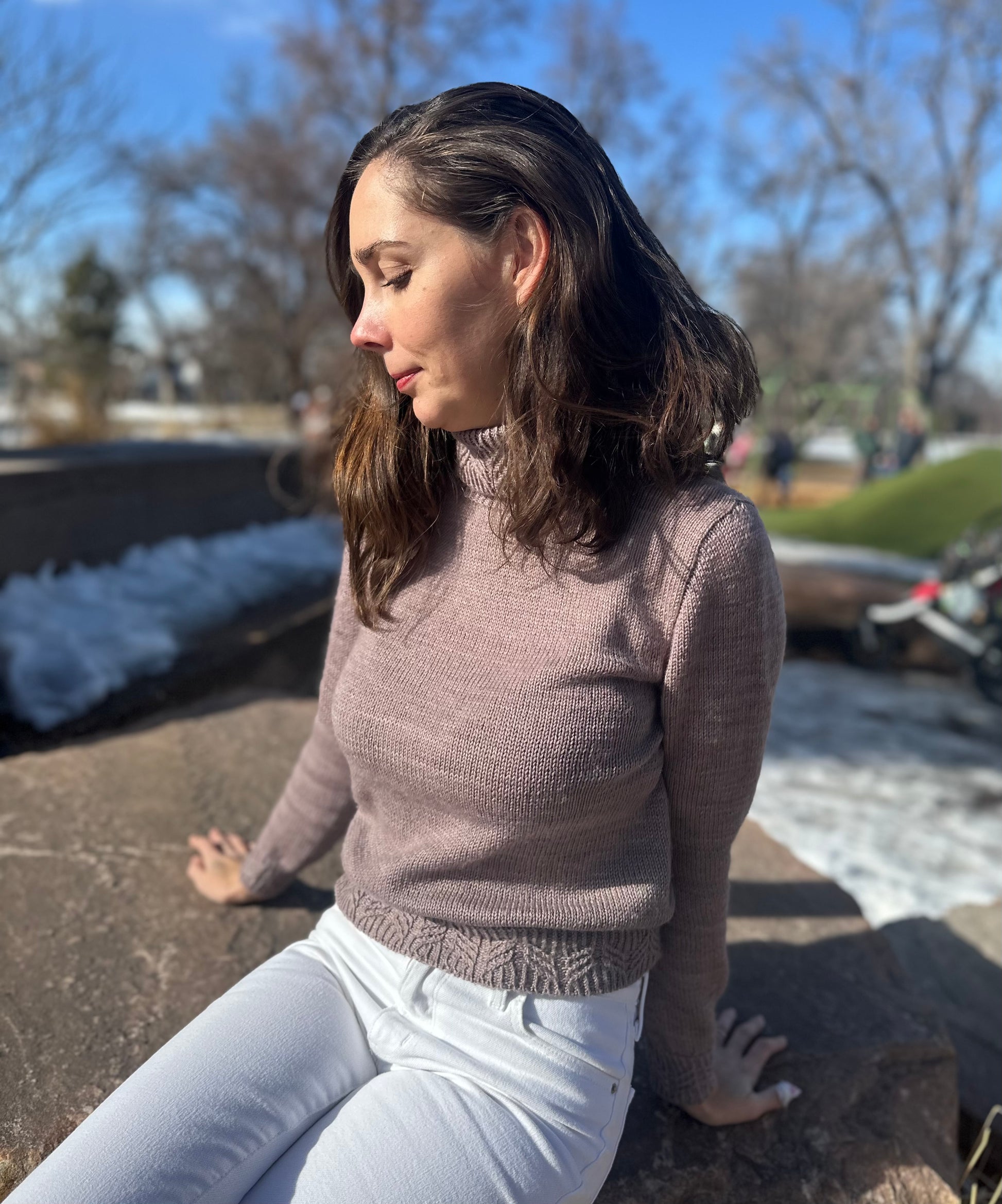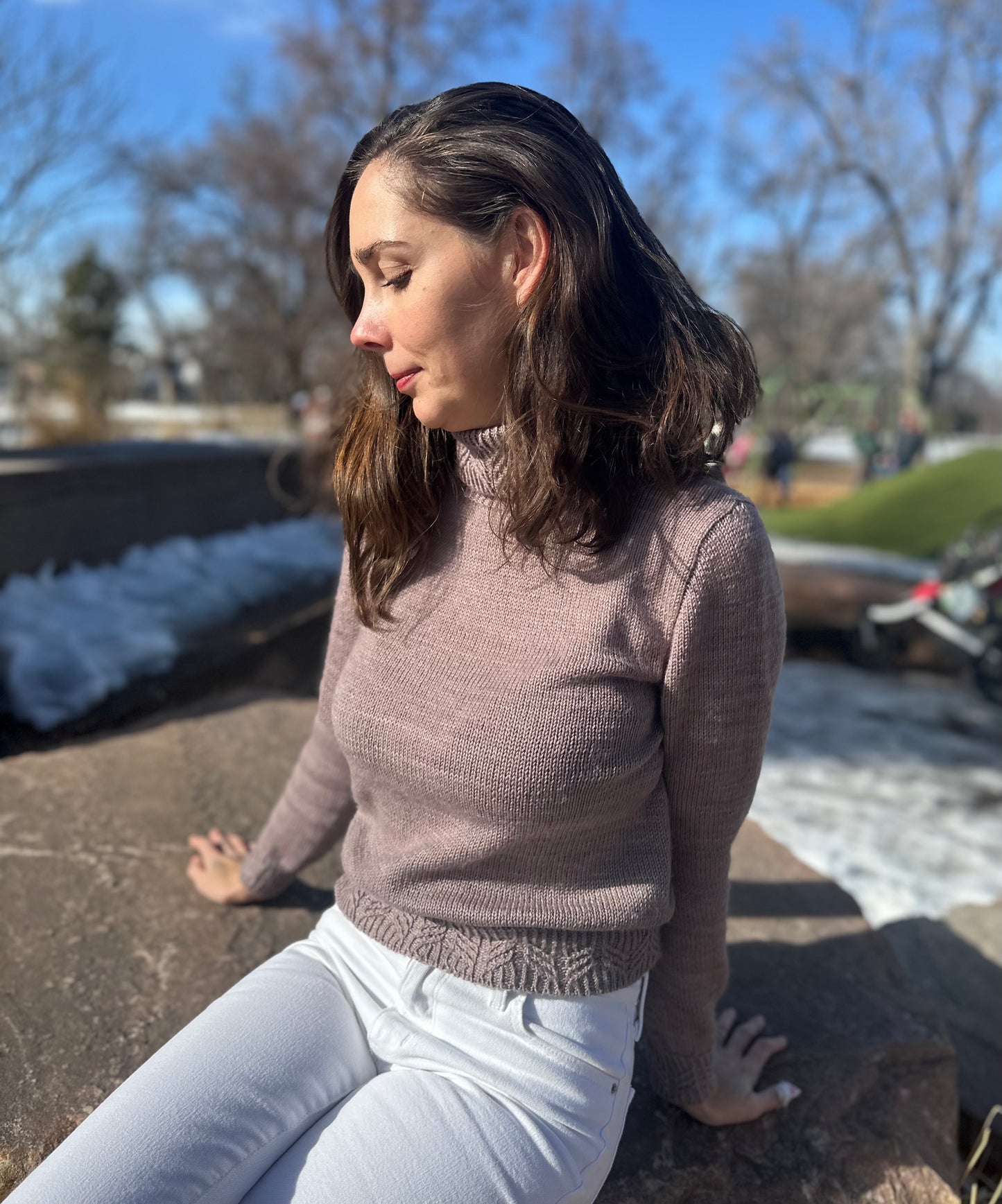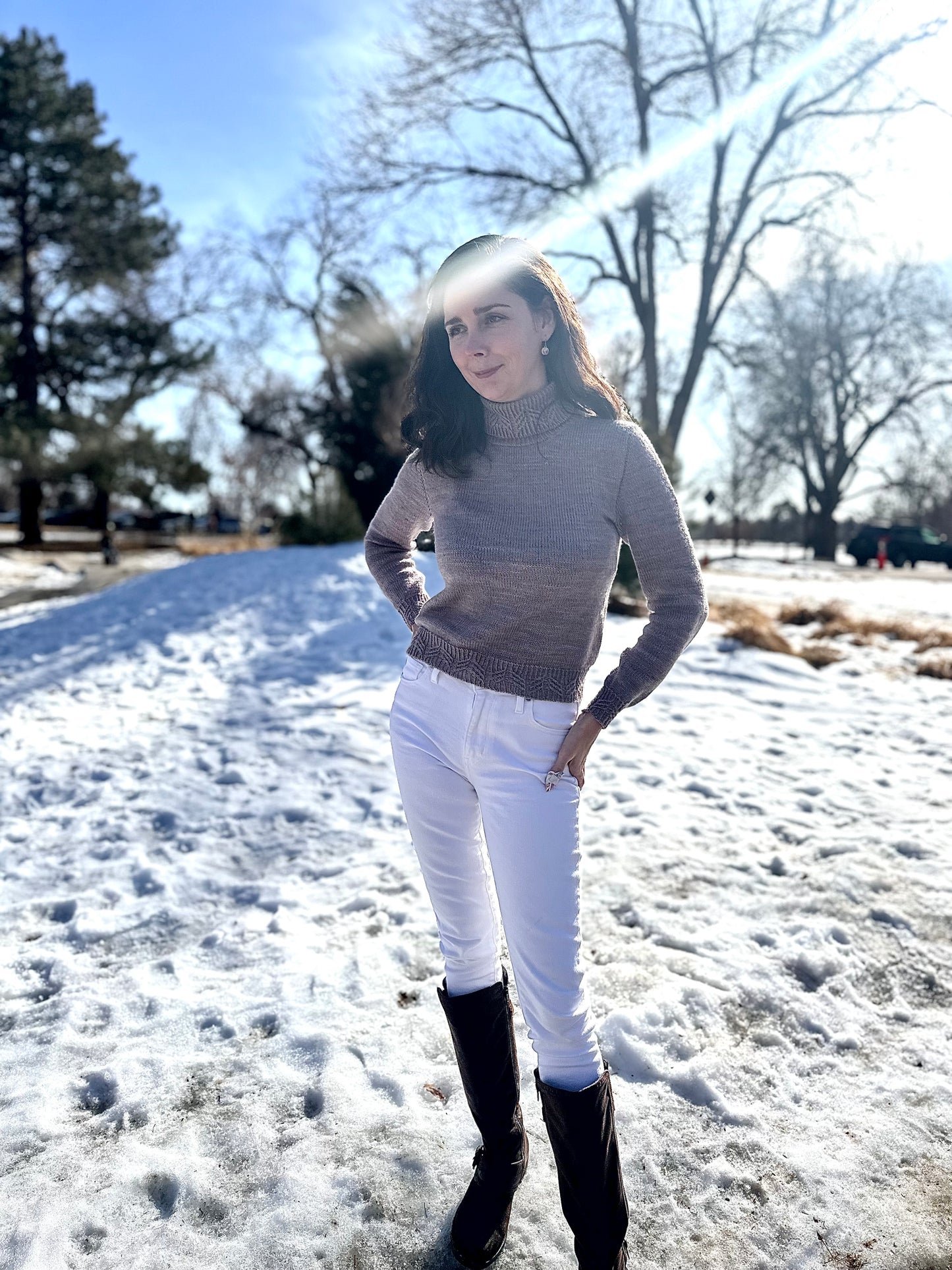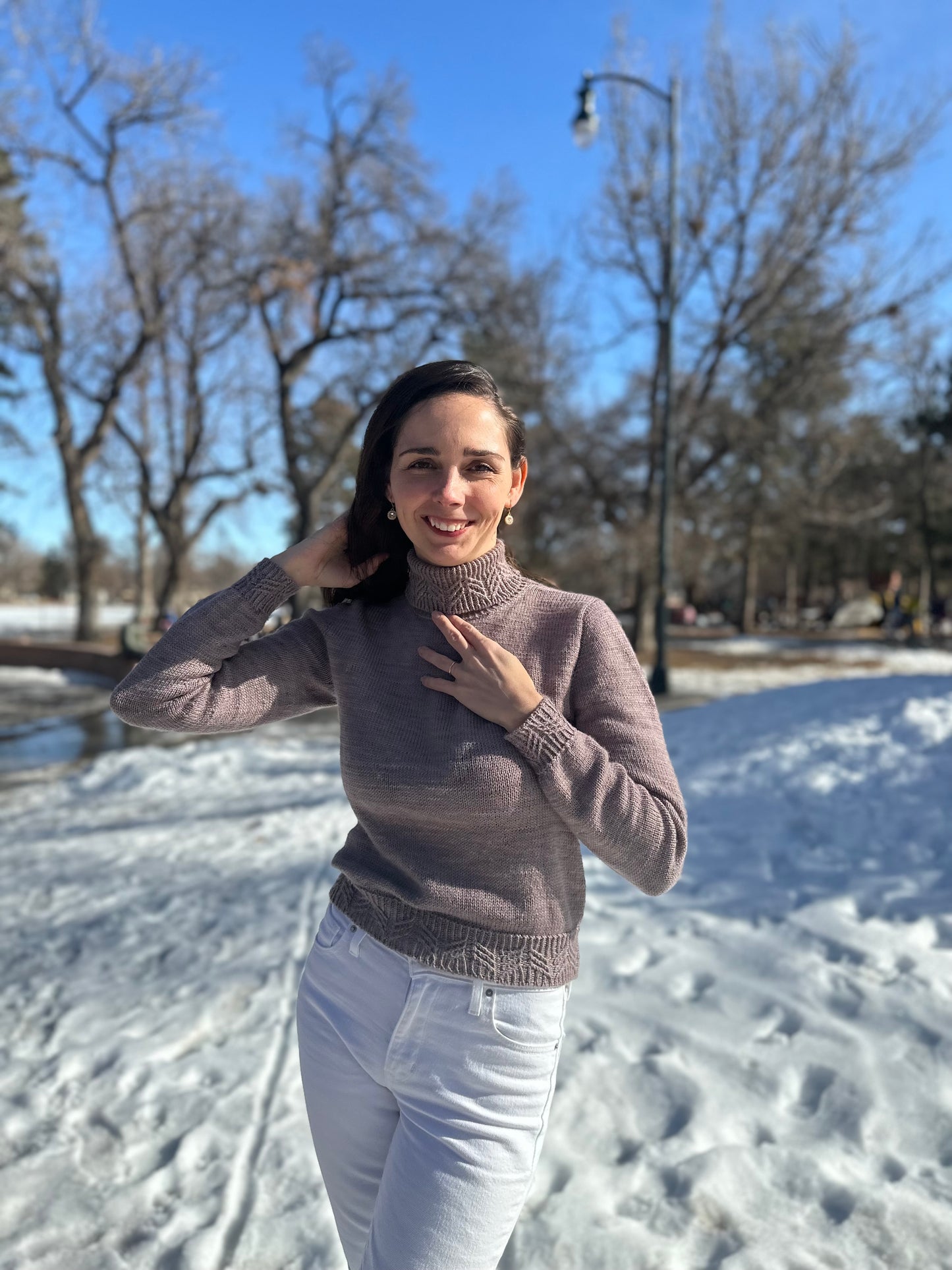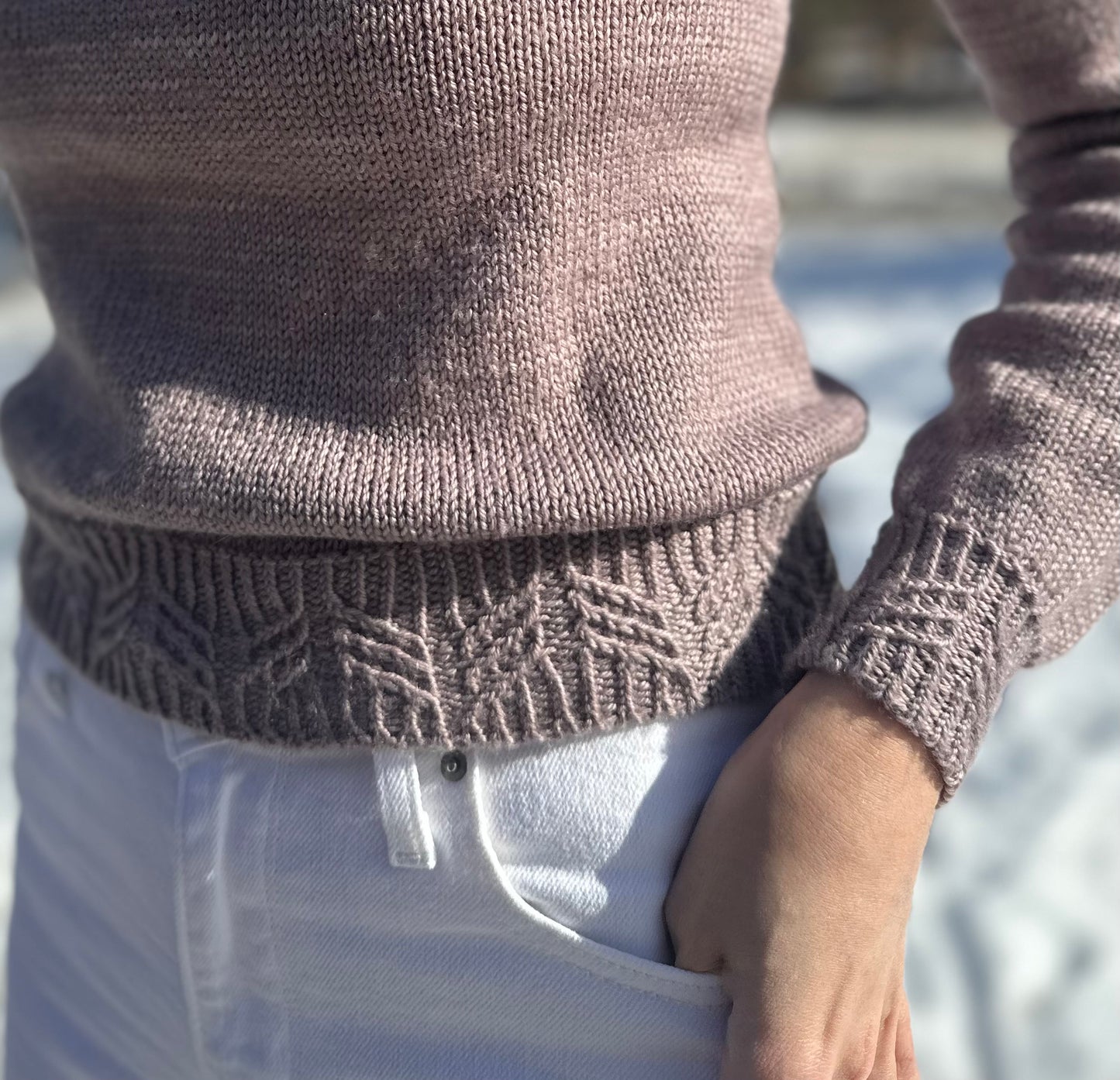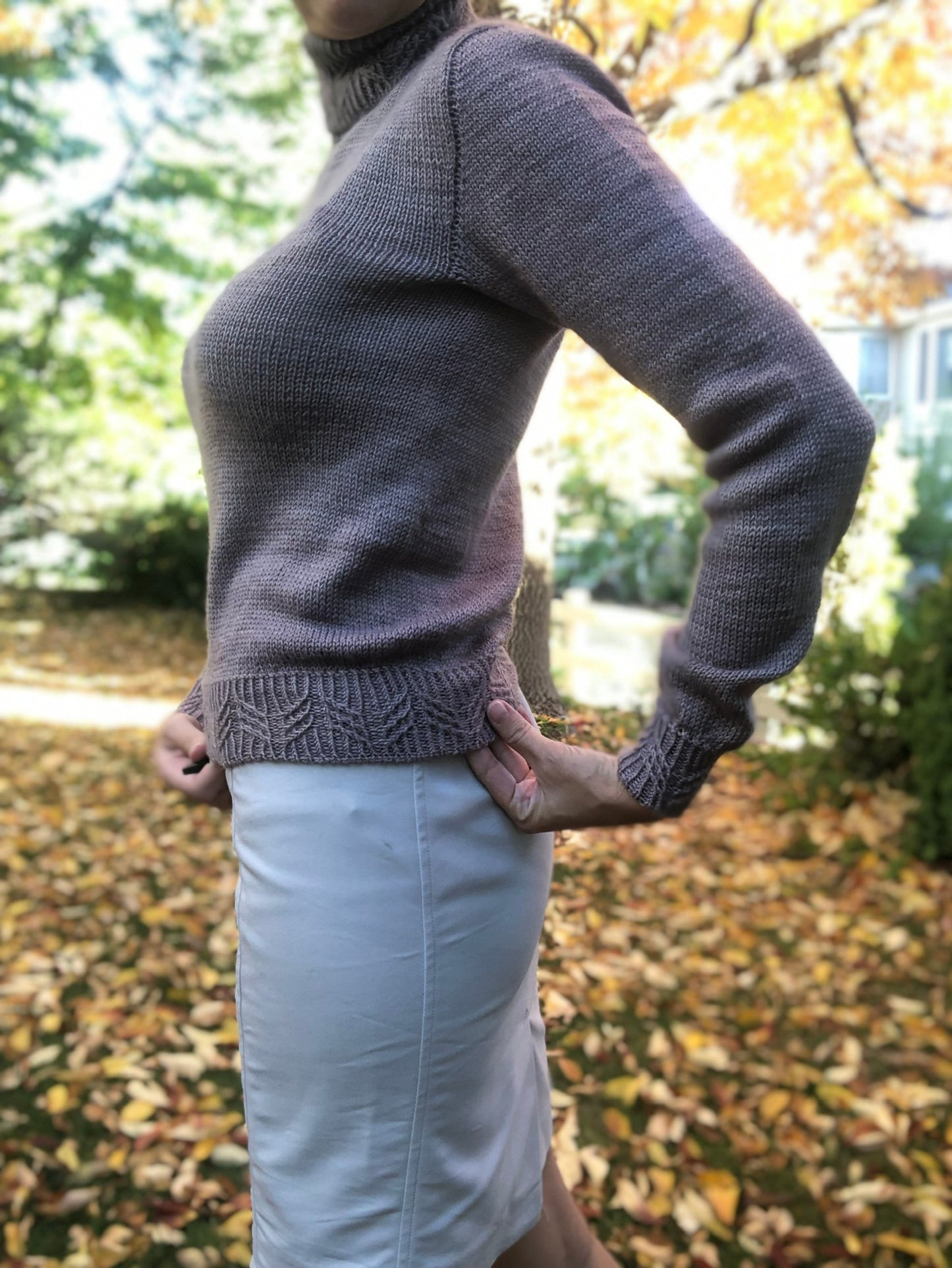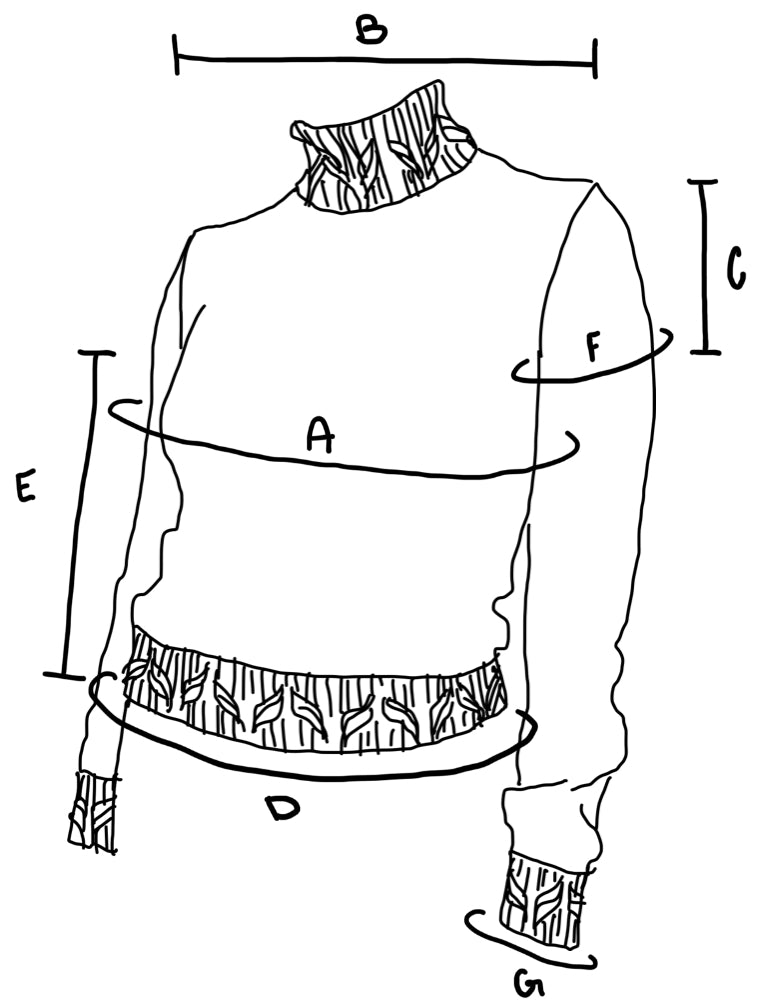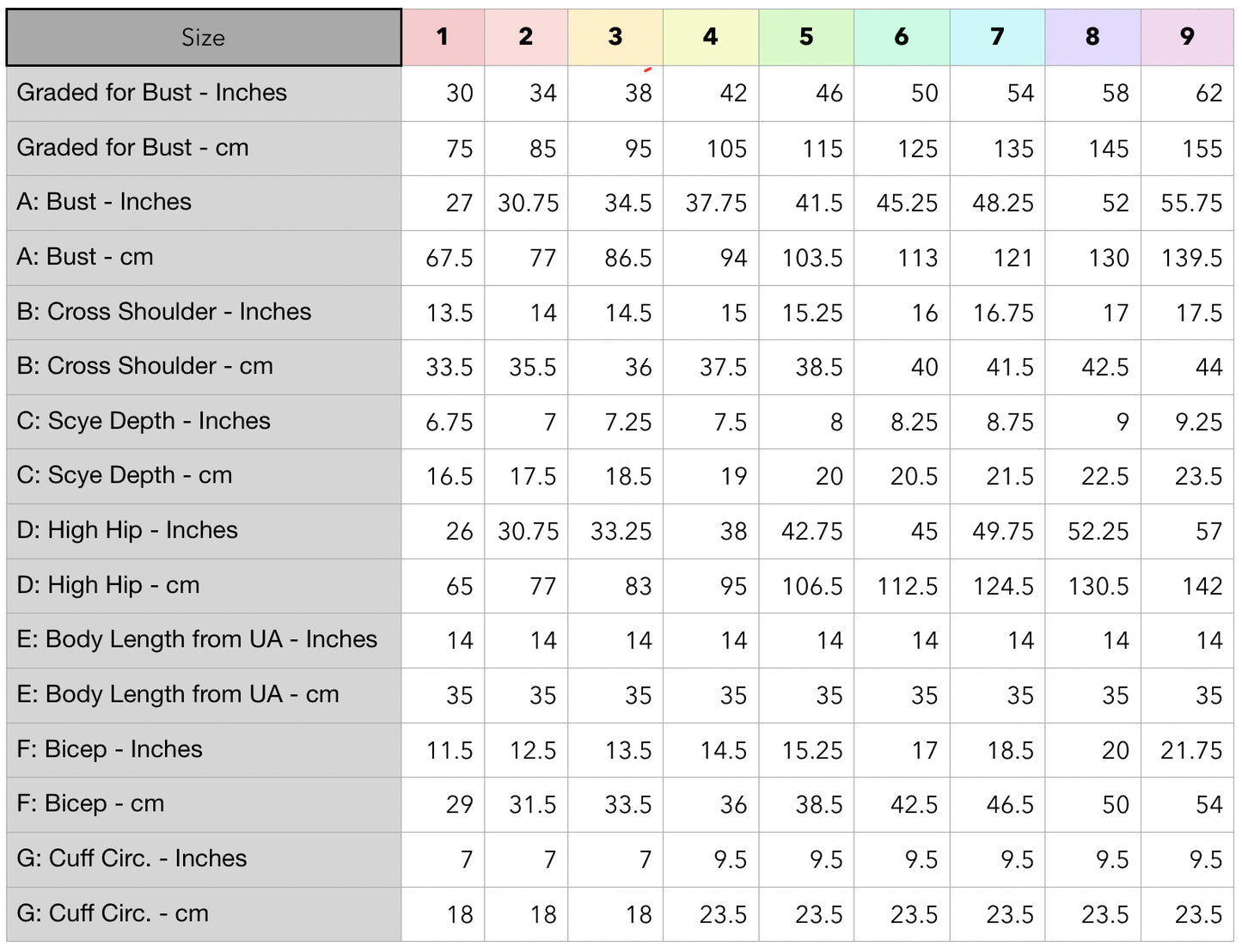I’m a big fan of modifying patterns to get the best fit for our bodies. However, great fit starts with choosing the right size. Choosing a size that works for most of our key fit points gives us a great base and launching point to make those focused fit modifications.
IMO, the yoke of a sweater (everything from the neck to the underarm) is what determines if a sweater will fit well or not. The key fit points are ALL upper torso measurements. We should pick a size that will fit our upper torso well, and then make modifications as necessary.
However, industry standard is to choose a size based on our full bust measurement; a lower torso measurement. We add the recommended ease to our full bust measurement and find the size with the finished measurement closest to that. Unfortunately, our full bust measurement isn’t an accurate predictor of our upper torso measurements. Instead, I recommend choosing a size to fit your upper torso well, and then making modifications in the body of the sweater to accommodate your lower torso (including full bust).
In order to choose the right size based on your measurements you will also need to know your measurements. You’ll get the most accurate measurements if you have a friend to help you, but you can get pretty close by yourself.
Here are the upper torso measurements I recommend taking:
Cross Shoulder Width - Shoulder to shoulder, where the collarbones end.
Cross Front - Straight across the front at under arm level.
Back Neck Width - Width across the back neck base.
Armscye Depth - Straight down from the shoulder tip to the underarm.
Shoulder Drop - The height difference between the high point of your neck where it meets the shoulder, and the shoulder tip.
Pictured above is the Woodruff Turtleneck, a pattern that comes with access to a spreadsheet for mixing and matching your upper torso measurements for impeccable fit.
Other useful measurements:
Upper Chest - Circumference above the bust at underarm level. This one is usually good for predicting the above measurements.
Bust Circumference - Circumference at fullest point of the bust. Once you’ve chosen a size based on your upper torso measurements you can see if you’ll end up with the recommended ease at the full bust. You can then choose to make modifications.
Bicep Circumference - Same as the full bust, check to see if you’ll end up with the recommended ease at the bicep with the size chosen based on upper torso measurements.
Waist Circumference - This is useful if the pattern has waist shaping or you would like it to have some. You may need to alter the shaping in the pattern to get the result you’re looking for.
Hip Circumference / High Hip Circumference - Depending on where the hem of the sweater lands these are good measurements to have. Most women’s size charts assume that the hip circumference is approximately the same as the full bust circumference. If that’s not the case for you, you may want to add shaping to the body for a more comfortable fit at the hem.
Let’s continue the conversation in my next blog post all about schematics. How to read them, compare the key fit points to your body measurements, and how to identify potential modifications.
